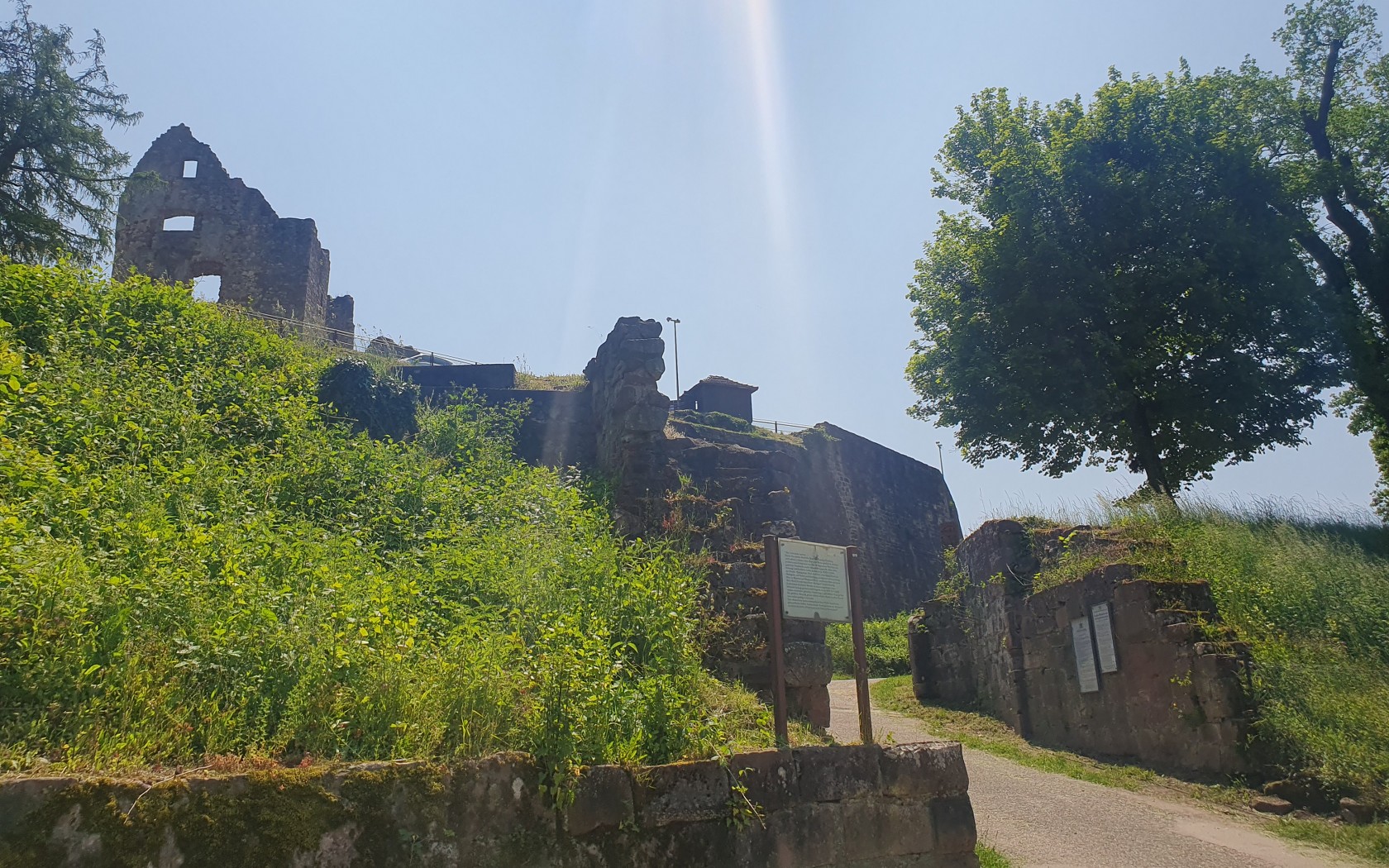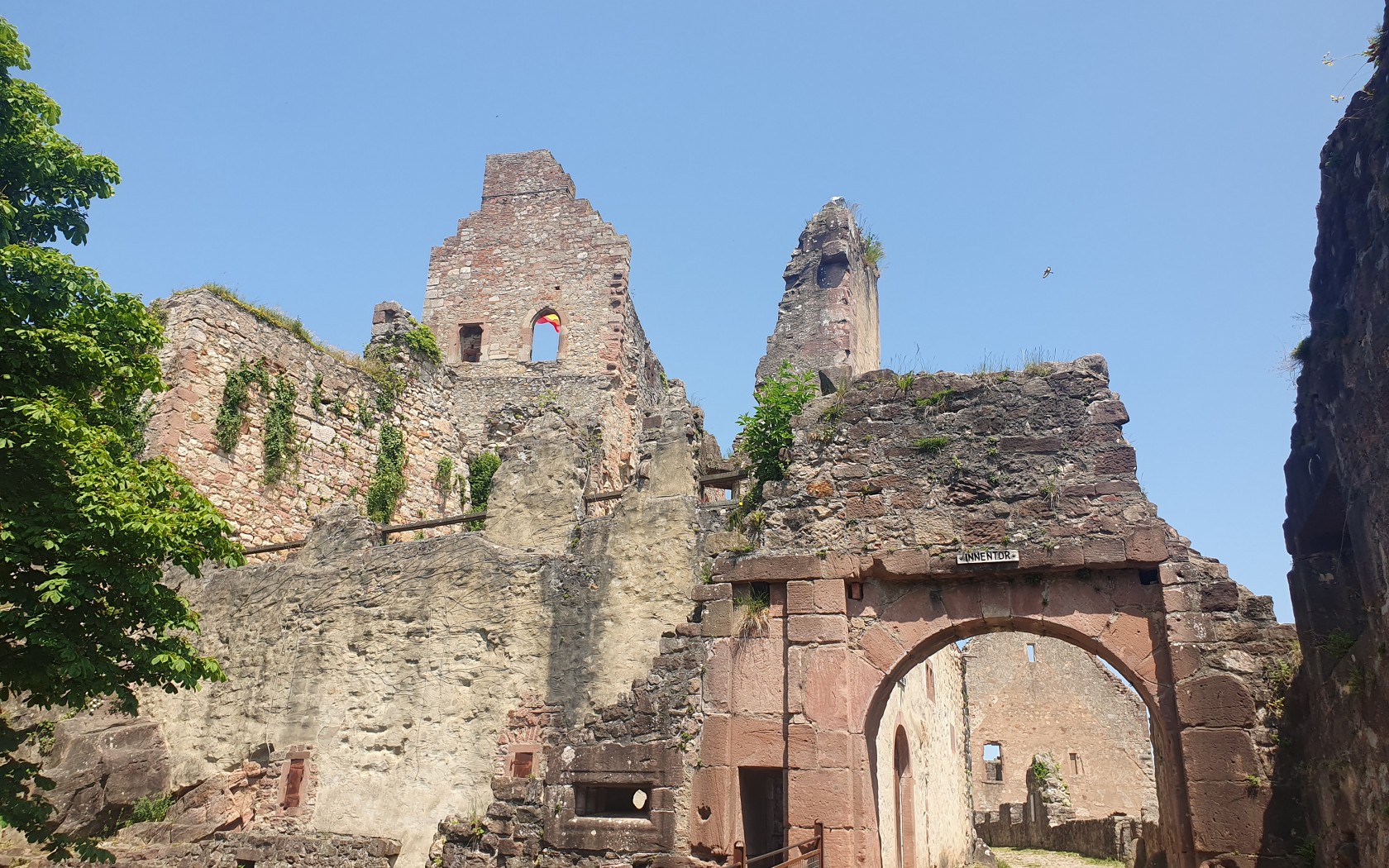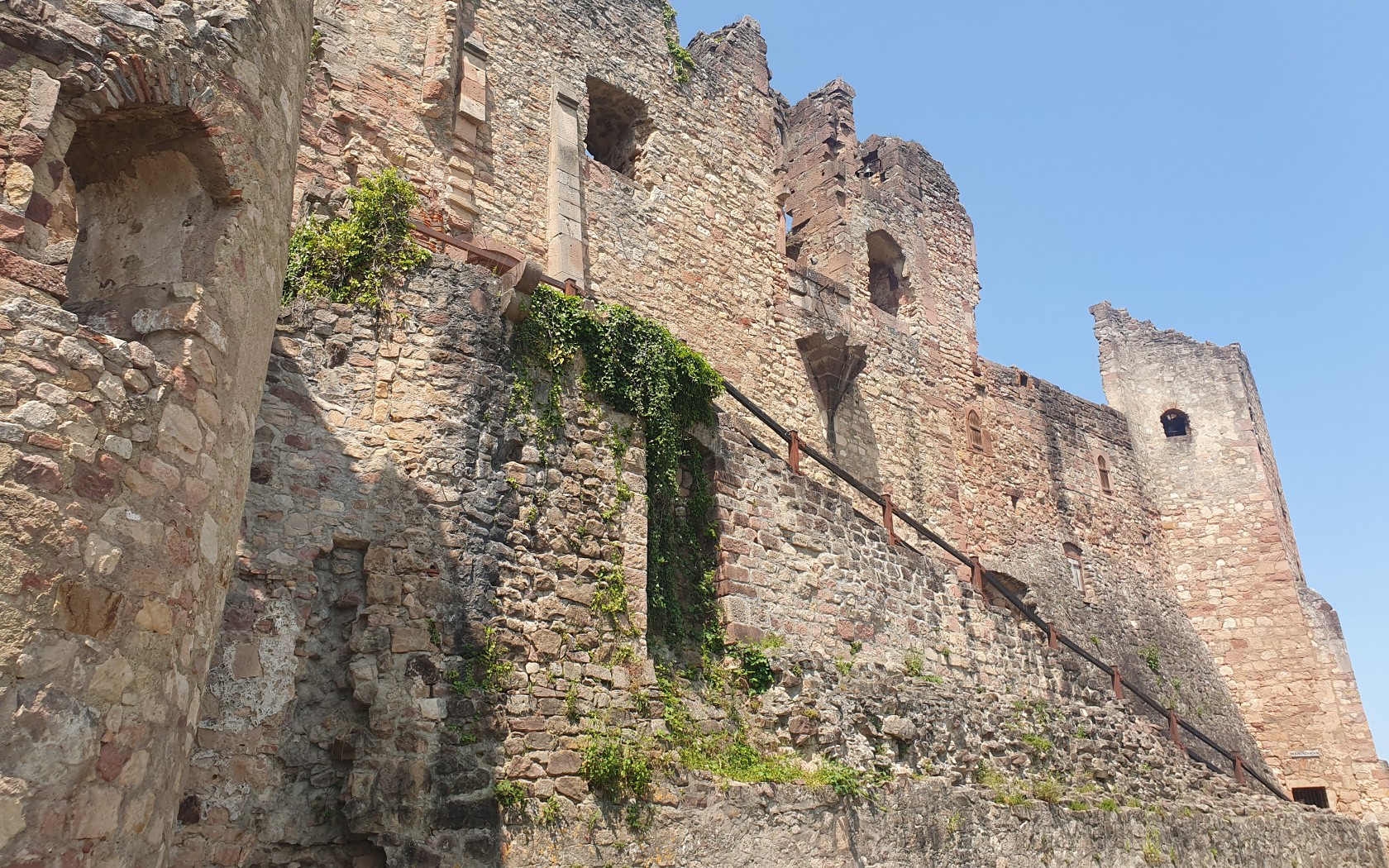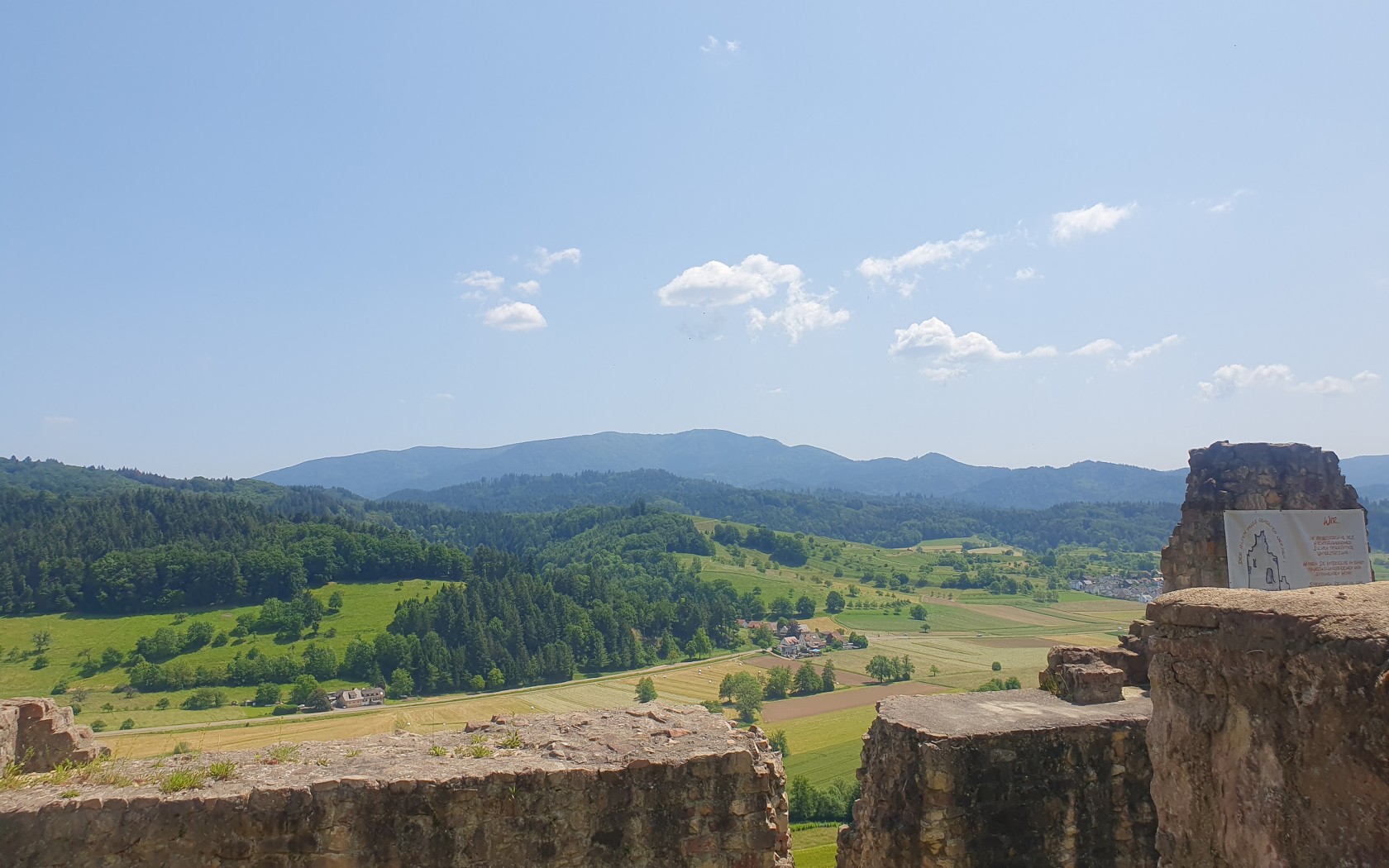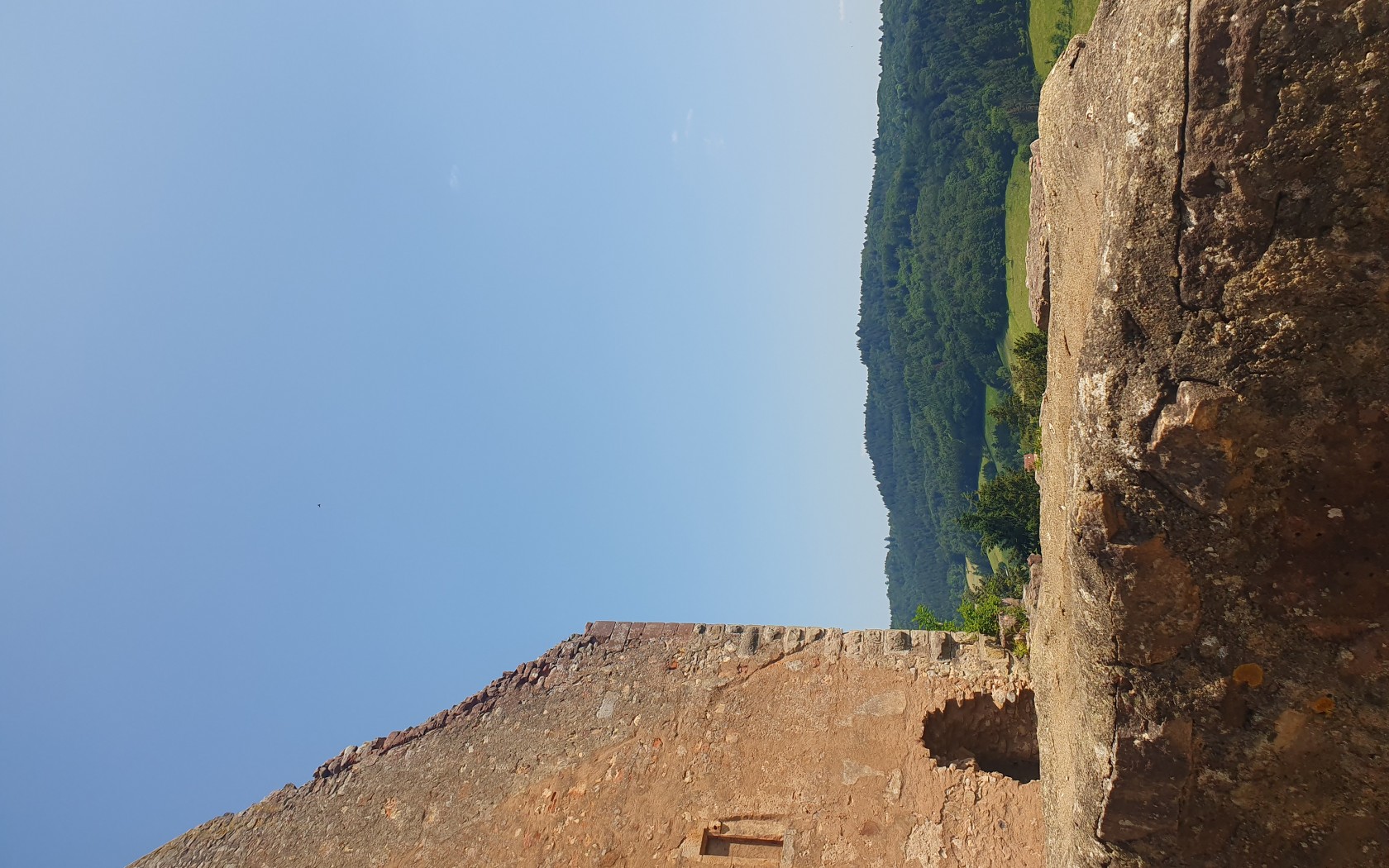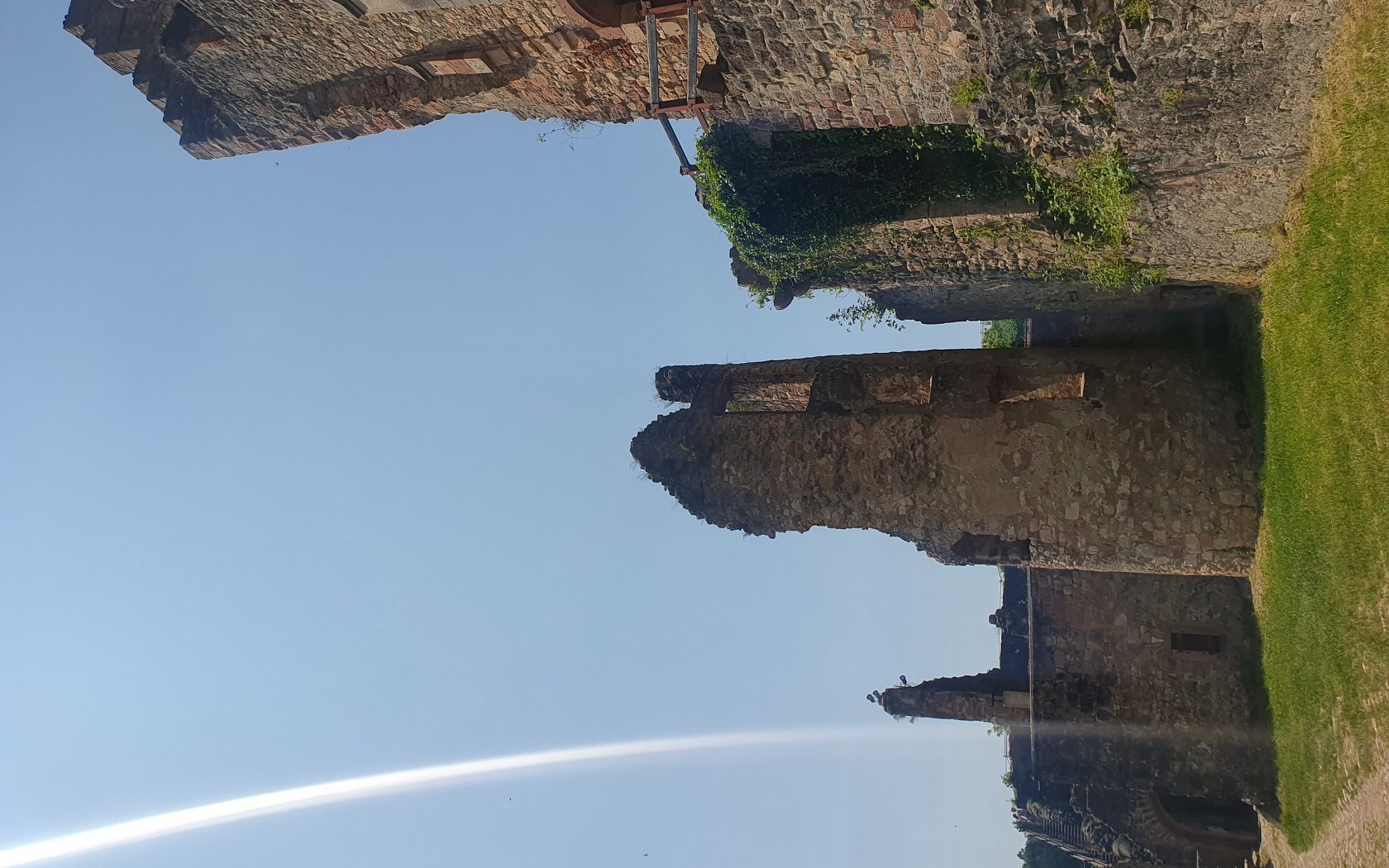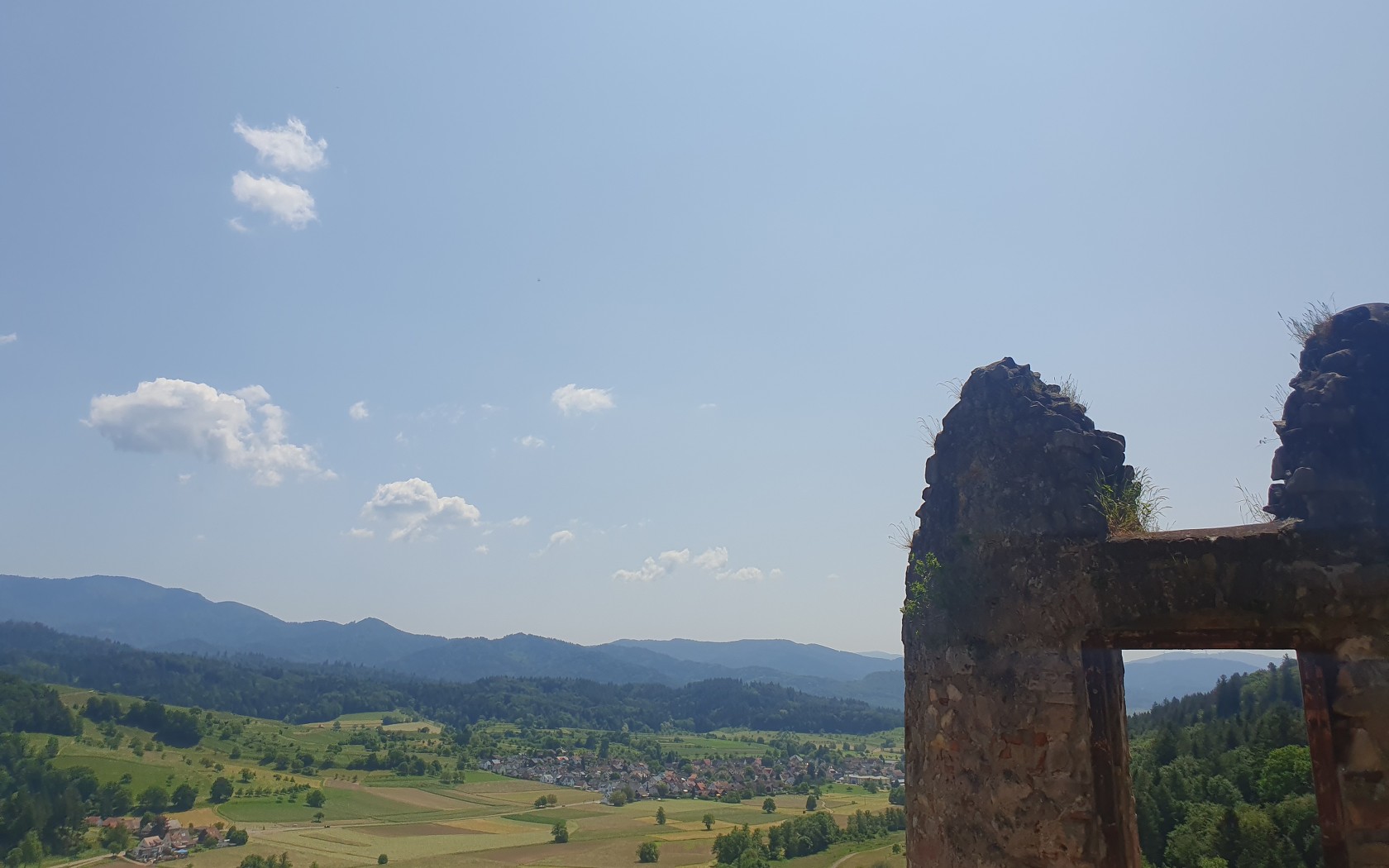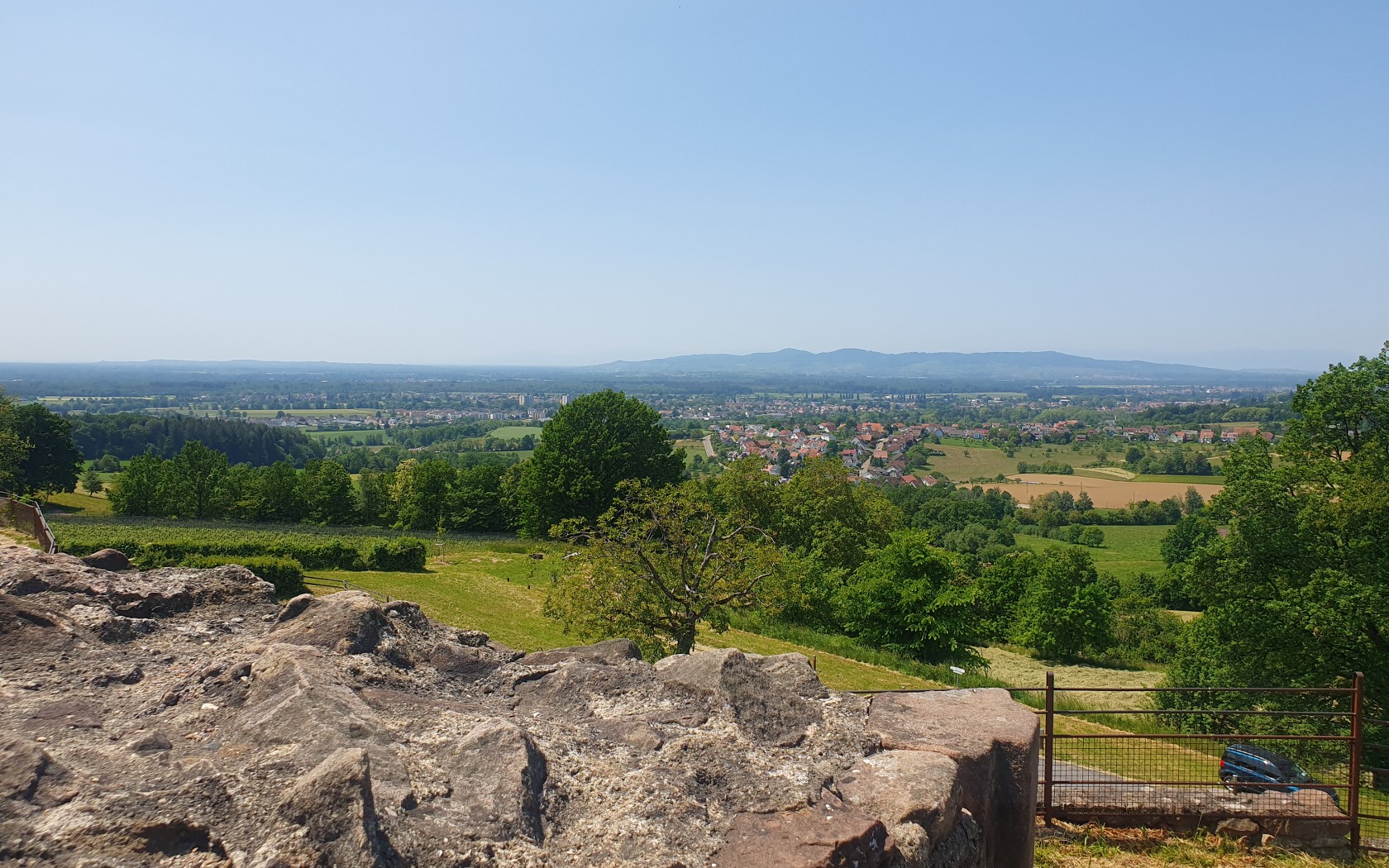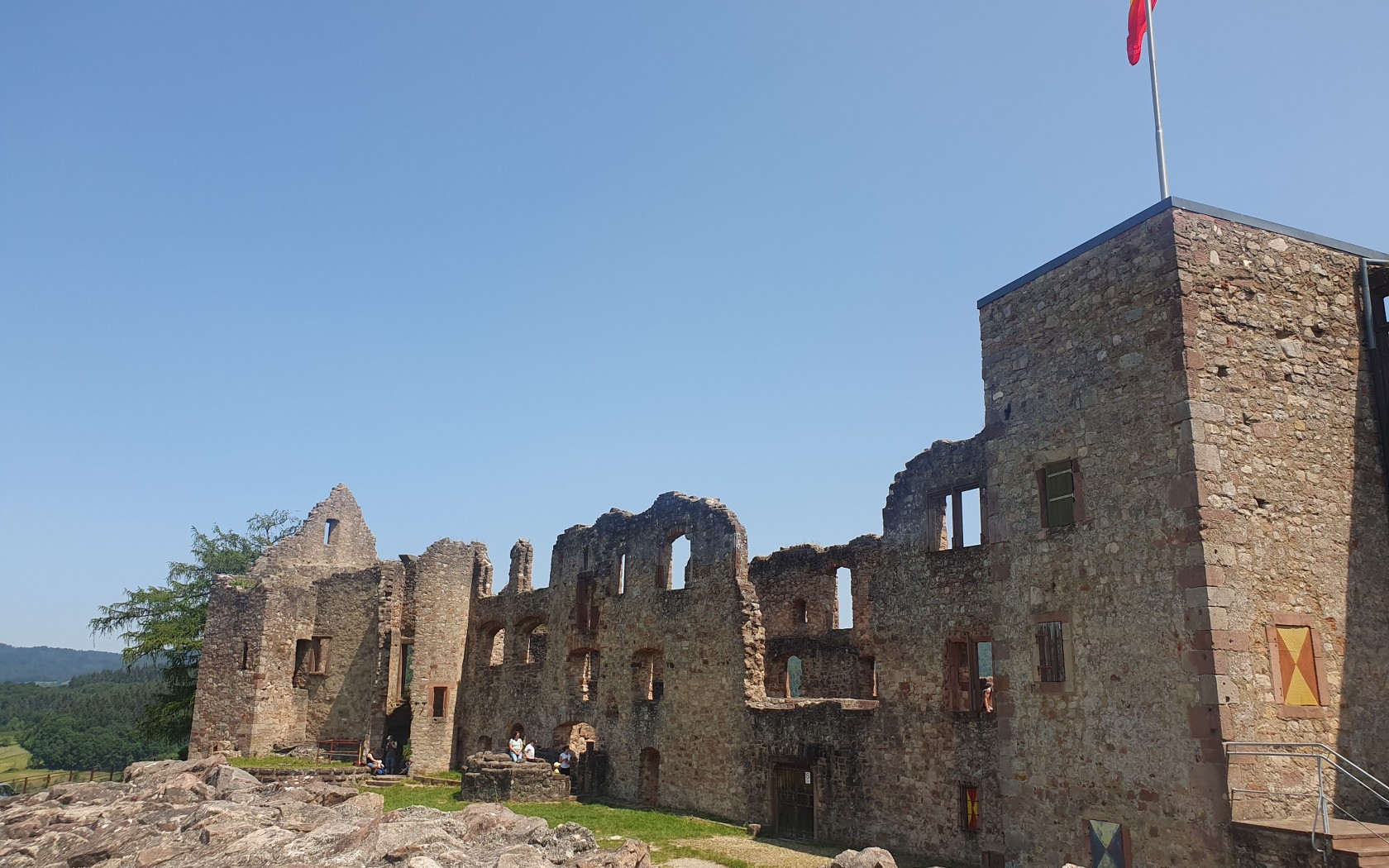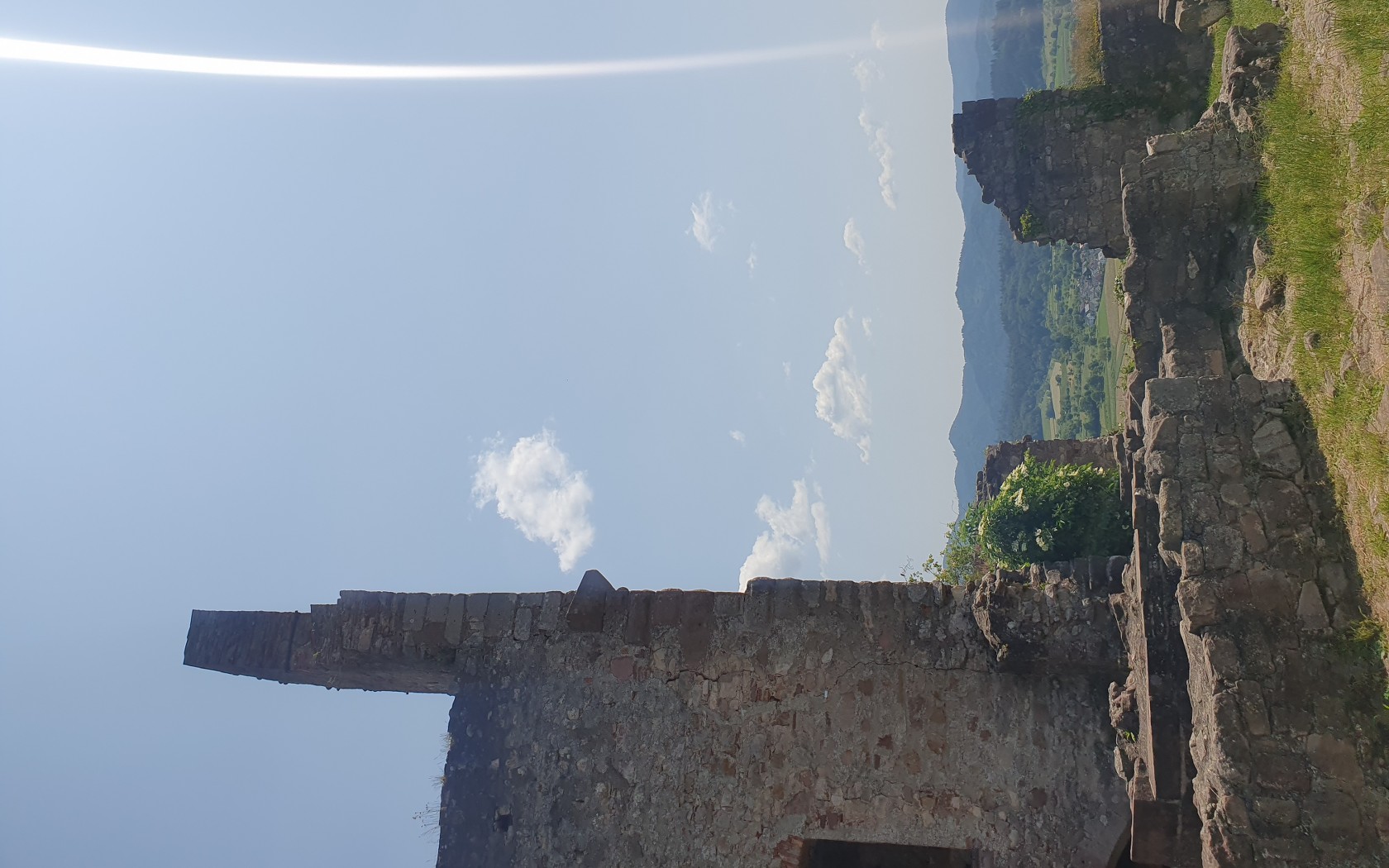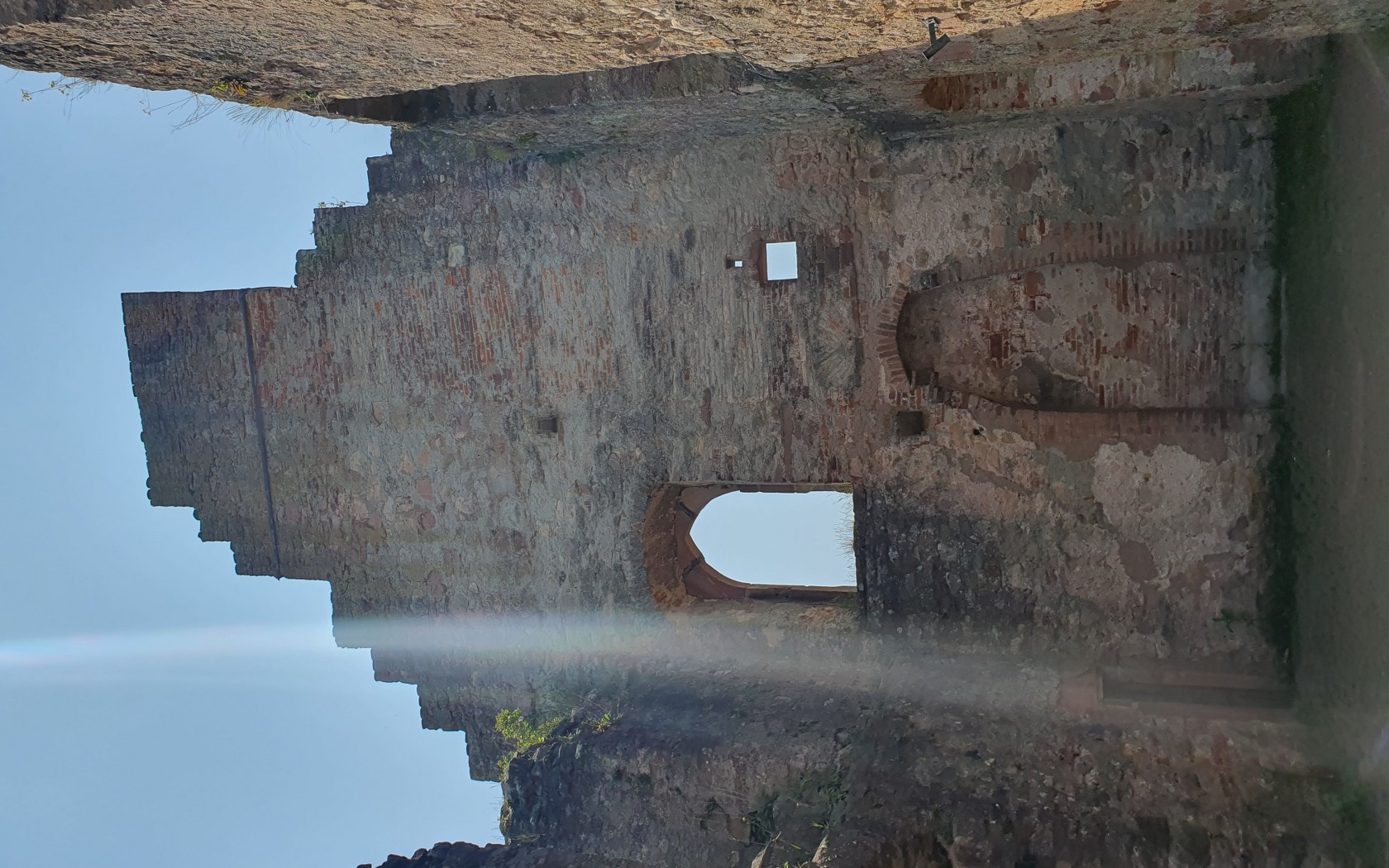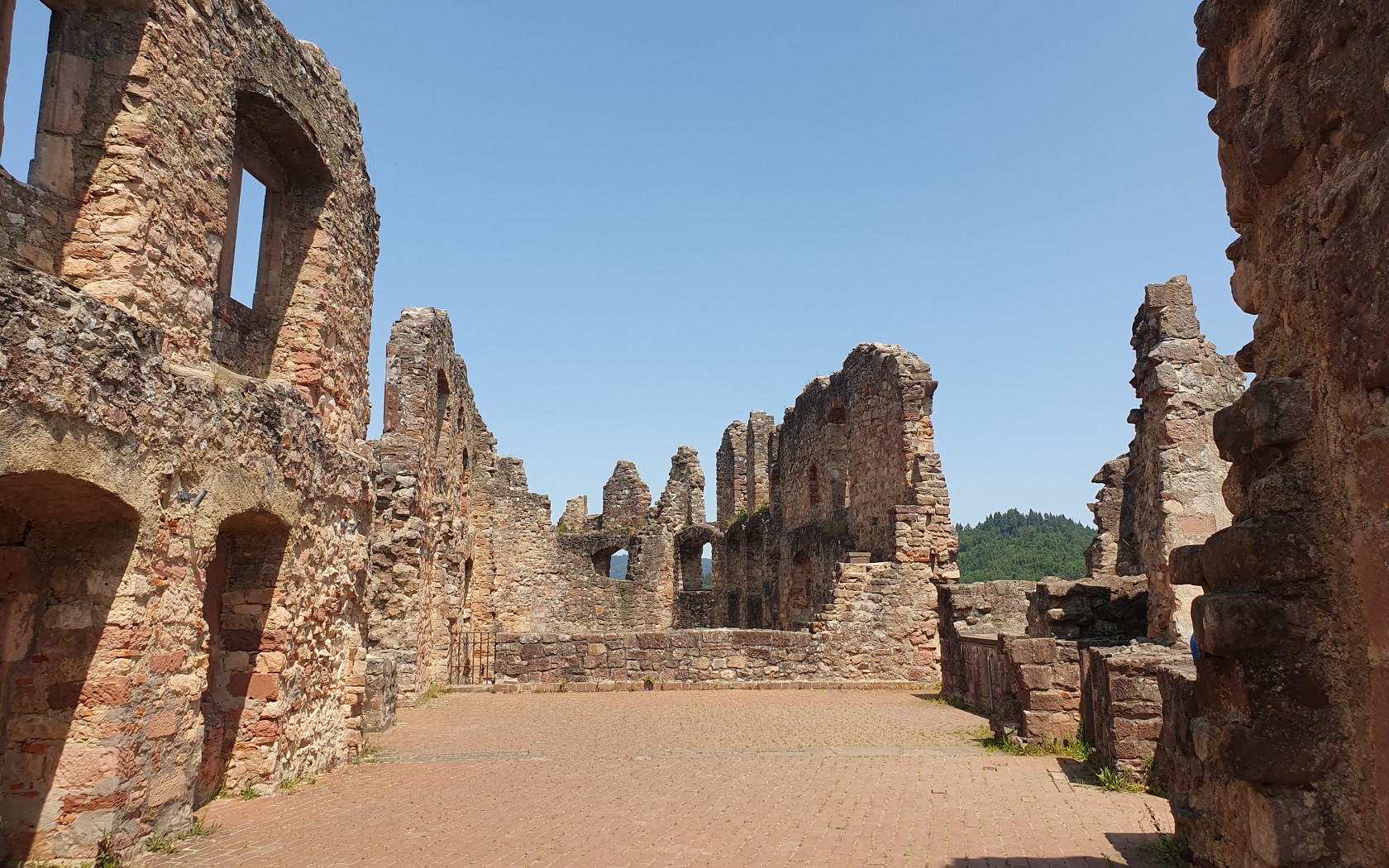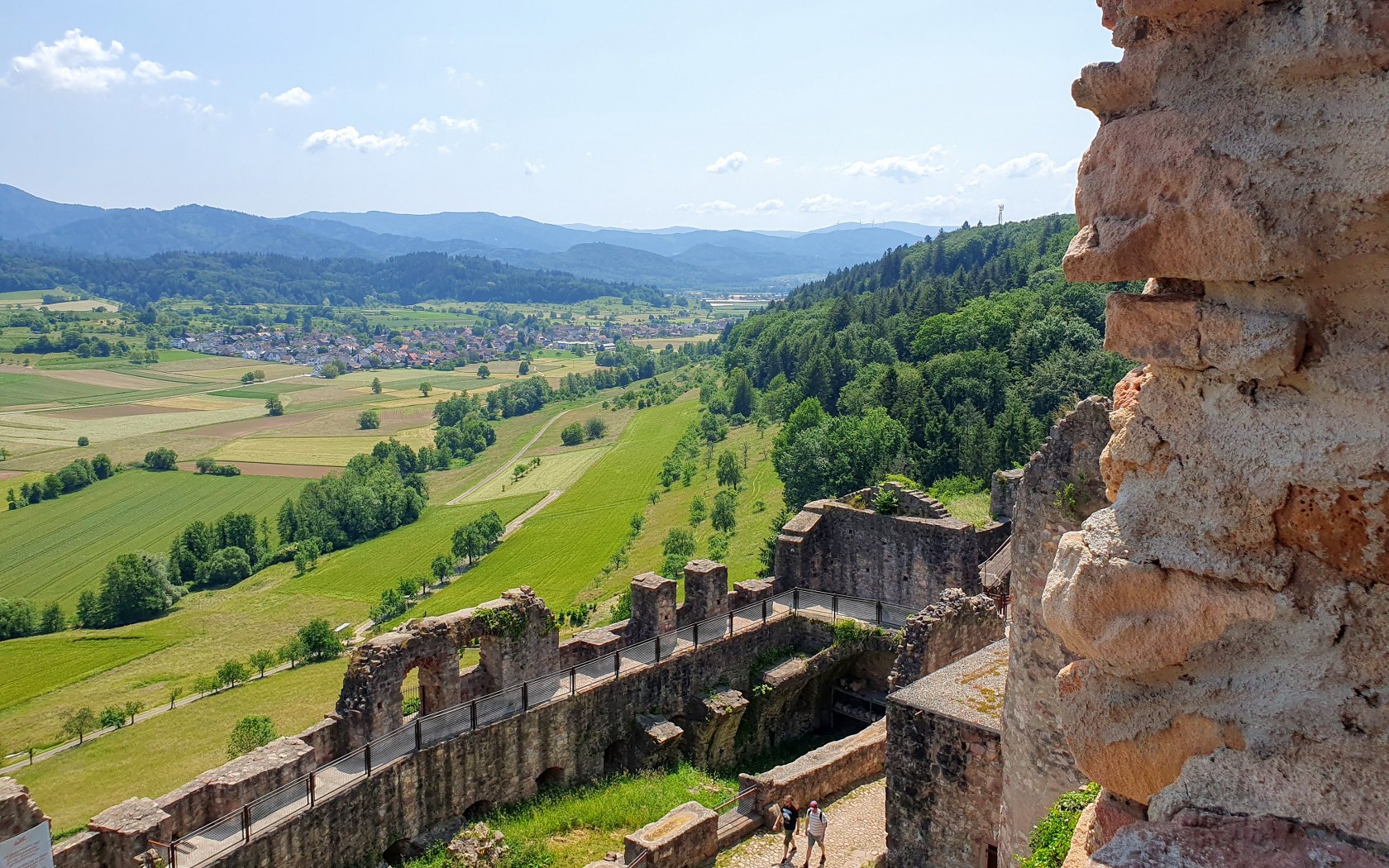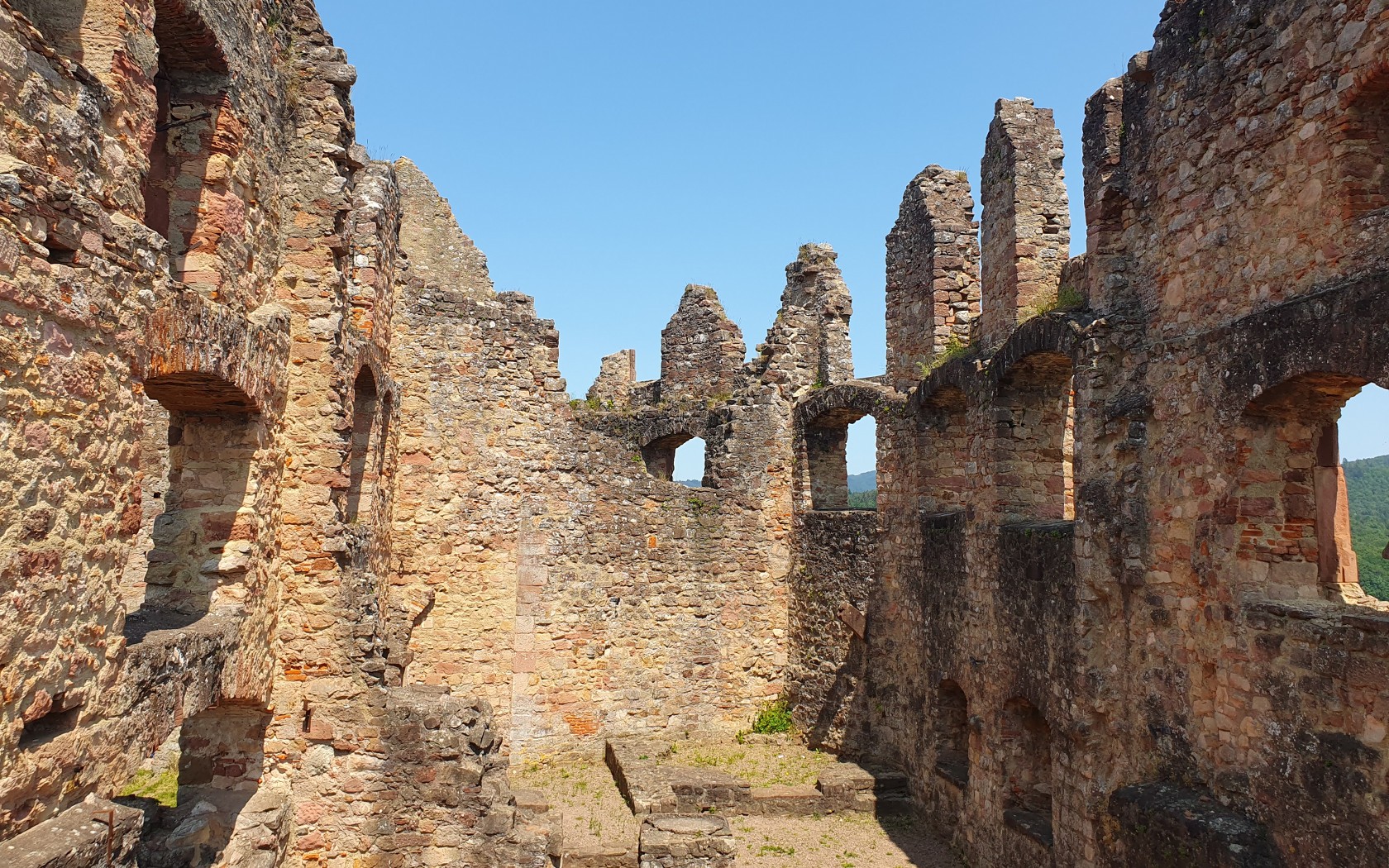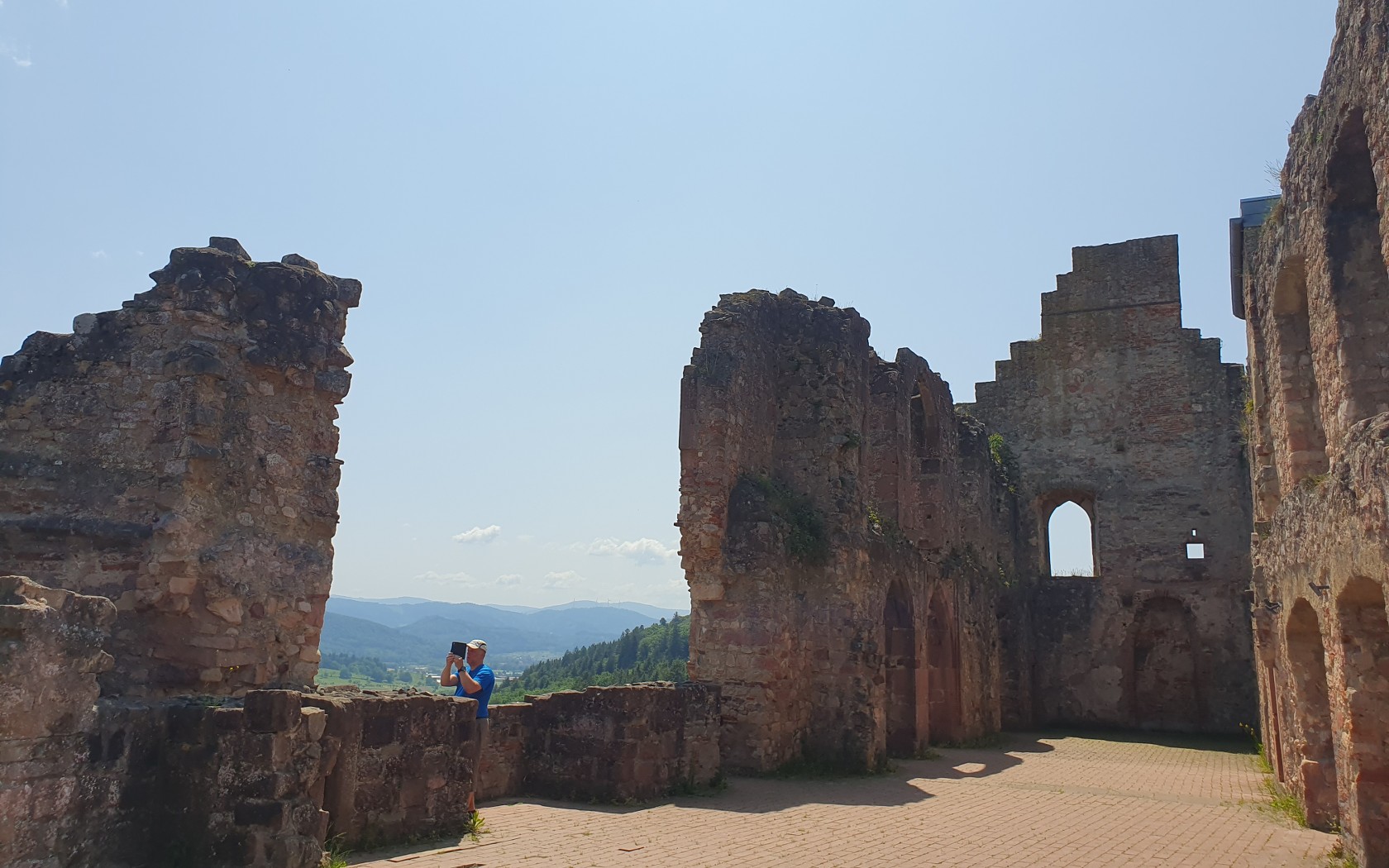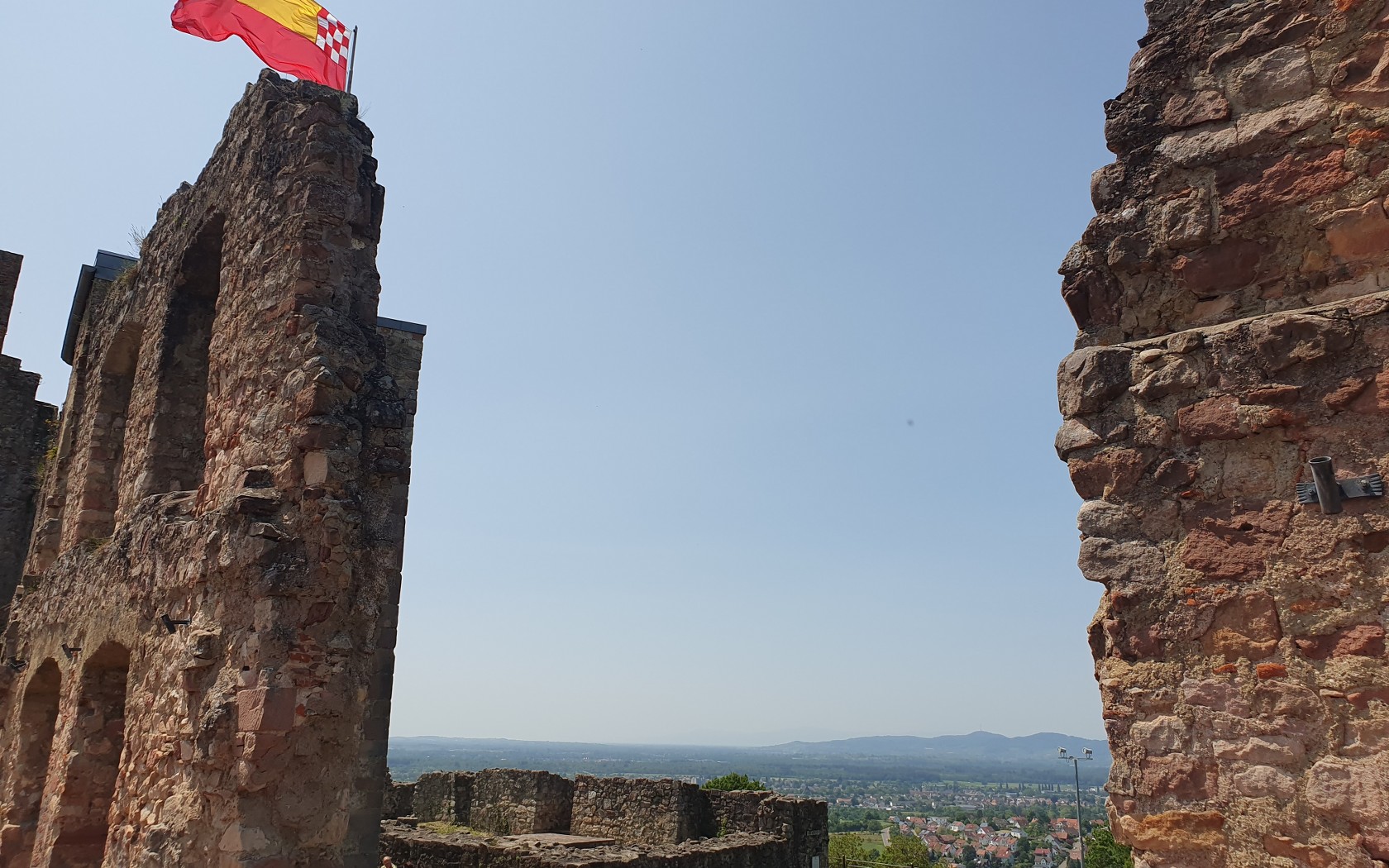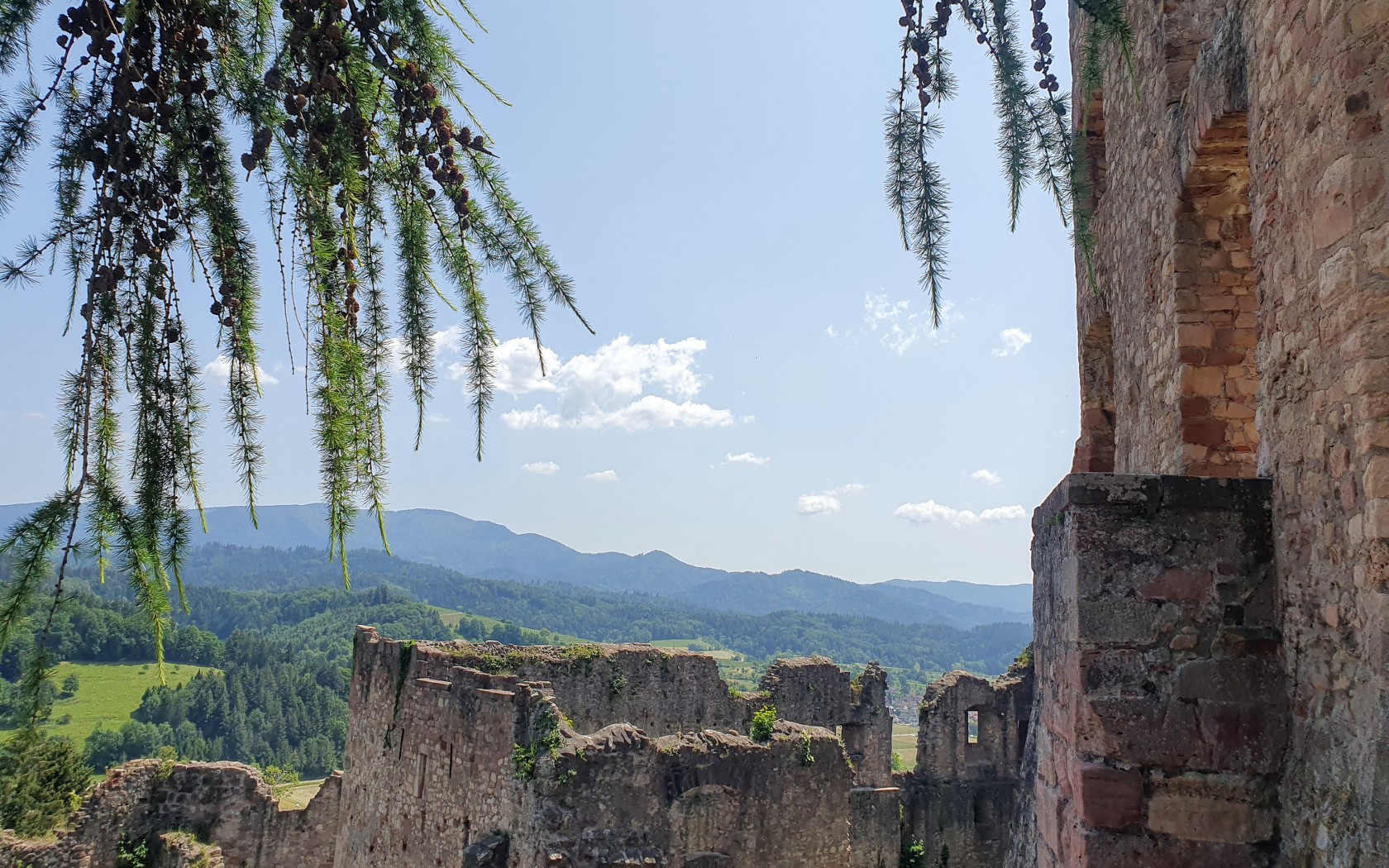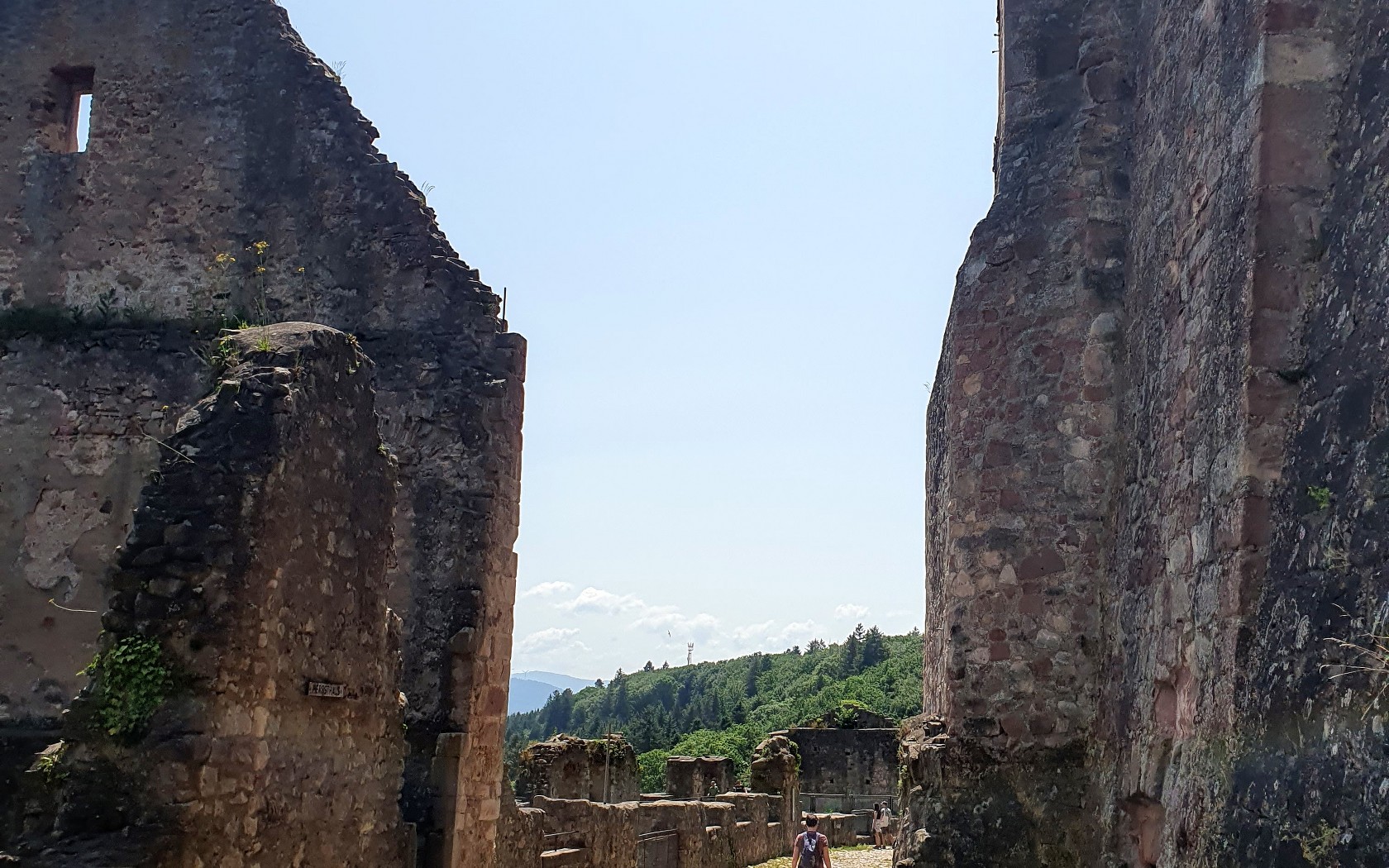In the past, the stronghold was particularly important due to its strategically favorable location. Today, however, the imposing castle ruins with their walls and towers offer a unique view of the picturesque vineyards and the fertile Upper Rhine Valley thanks to their former military advantage.
Story
The stronghold was built in 808 under the rule of Charlemagne by Hacho, as can be read on a statue of Margrave Charles II of Baden-Durlach (1529–1577) in the town church of Emmendingen. The name Hachberg is derived from Hacho and thus also refers to the castle. Little is known about the castle before the Margraves of Baden-Hachberg moved in in the 12th century. However, it was expanded into a representative medieval ruler's seat.
The stronghold remained the administrative centre of the southern Baden lands even when it was owned by the Margraves of Baden-Durlach. Since there were no towns in the vicinity of the castle for a long time, both the administration and the military security of the county were located in the castle. Office rooms, granaries, barns, cellars and apartments for soldiers and their families were located in cramped conditions within the castle.
Margrave Ernst of Baden-Durlach (1515–1553) further expanded and fortified the stronghold. During the Peasants' War in 1525, the peasants were unable to overcome the fortified structure. After 1553, his son, Margrave Charles II, had the stronghold expanded into a Renaissance palace. At the beginning of the 17th century, Margrave Georg Friedrich had the seven bastions built in the spirit of modern fortress architecture. But in the same century, the fortress fell victim to the superior powers of the imperial troops and the Sun King.
In the 19th century, interest in medieval buildings grew and ruins were considered romantic. With this spirit of the times, new ideas arose about preserving ruins or even rebuilding them, as was the case with Heidelberg Castle. Since then, efforts have been made to protect the remaining walls of the Hochburg from decay. The "Association for the Preservation of the Hochburg Ruins" has been looking after this important architectural monument since 1971.
The curse of money
stronghold and sings a song. Every night she goes down into the Brettental, washes her long hair and braids it. She goes down into the valley happily, but returns crying to the castle that has held her captive for centuries. She always carries a bunch of keys with her.
Once the maiden met a farmer from Windenreute. At night she asked him to come with her to the castle. She promised to show him a treasure that he could take with him as long as he could carry it without putting it down. He had to repeat this until there was nothing left of the treasure. Then she would be freed. "If I don't find her through you," said the maiden, "I will have to wait a long time for her, because the wood for the cradle of the child that can help me has not yet grown."
When the farmer saw the treasure, he could not resist his greed. He collected as much money as he could fit in his sack. But on the way, the burden became too heavy and he put the sack down and lost consciousness. When he came to, the sack was empty. The white maiden has not been redeemed to this day.
Access
The castle is best reached on foot from the nearby car park.




